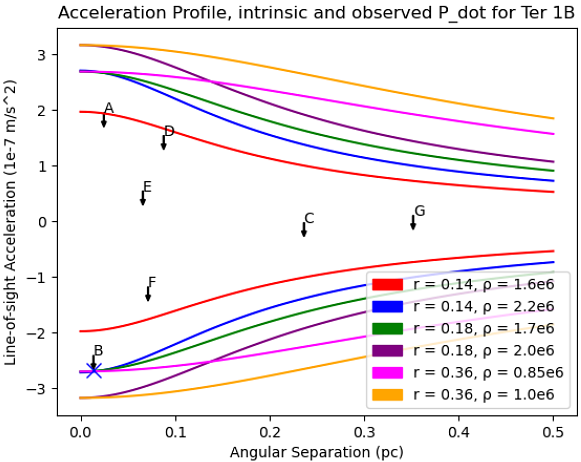Timing of Seven Isolated Pulsars in the Globular Cluster Terzan 1

Timing of Seven Isolated Pulsars in the Globular Cluster Terzan 1
Justine Singleton, Megan DeCesar, Shi Dai, Deven Bhakta, Scott Ransom, Jay Strader, Laura Chomiuk, James Miller-Jones
AbstractGlobular clusters host large populations of millisecond pulsars (MSPs) due to their high gravitational encounter rates, producing many binary systems and thus MSPs via the recycling process. Seven pulsars with spin periods ranging from 3 ms to 134 ms have been discovered in Terzan 1, which was targeted for pulsar searches with the Green Bank Telescope after Australia Telescope Compact Array imaging revealed steep-spectrum point sources in the cluster core. We have obtained timing observations over seven years, for the first seven Green Bank Telescope (GBT) discoveries (Terzan 1 A through G), using the GBT and Murriyang, CSIRO's Parkes radio telescope. All seven pulsars are isolated, consistent with Terzan 1's classification as a core-collapsed cluster (core collapse is predicted to disrupt, or ionize, binaries). With these timing solutions, we measured the positions and observed period derivatives, dP/dt, for each pulsar. The measured dP/dt values are composed of intrinsic spin-down and accelerations experienced by the pulsars (primarily from the cluster's gravitational potential), and they can be used to infer line-of-sight accelerations. We attempted to constrain the radius and density of the cluster core using these inferred accelerations. A wide range of radii and densities are possible, pointing to the need for continued timing as well as new discoveries to better constrain these cluster properties. We additionally find that Ter 1 A may be younger than the cluster and thus may have formed via a formation channel other than a core-collapse supernova. Theoretical formation mechanisms such as electron-capture supernovae from accretion- or merger-induced collapse of white dwarfs could potentially explain these pulsars' origins. It may therefore be a member of a small but growing class of globular cluster pulsars that appear to be significantly younger than their host clusters.